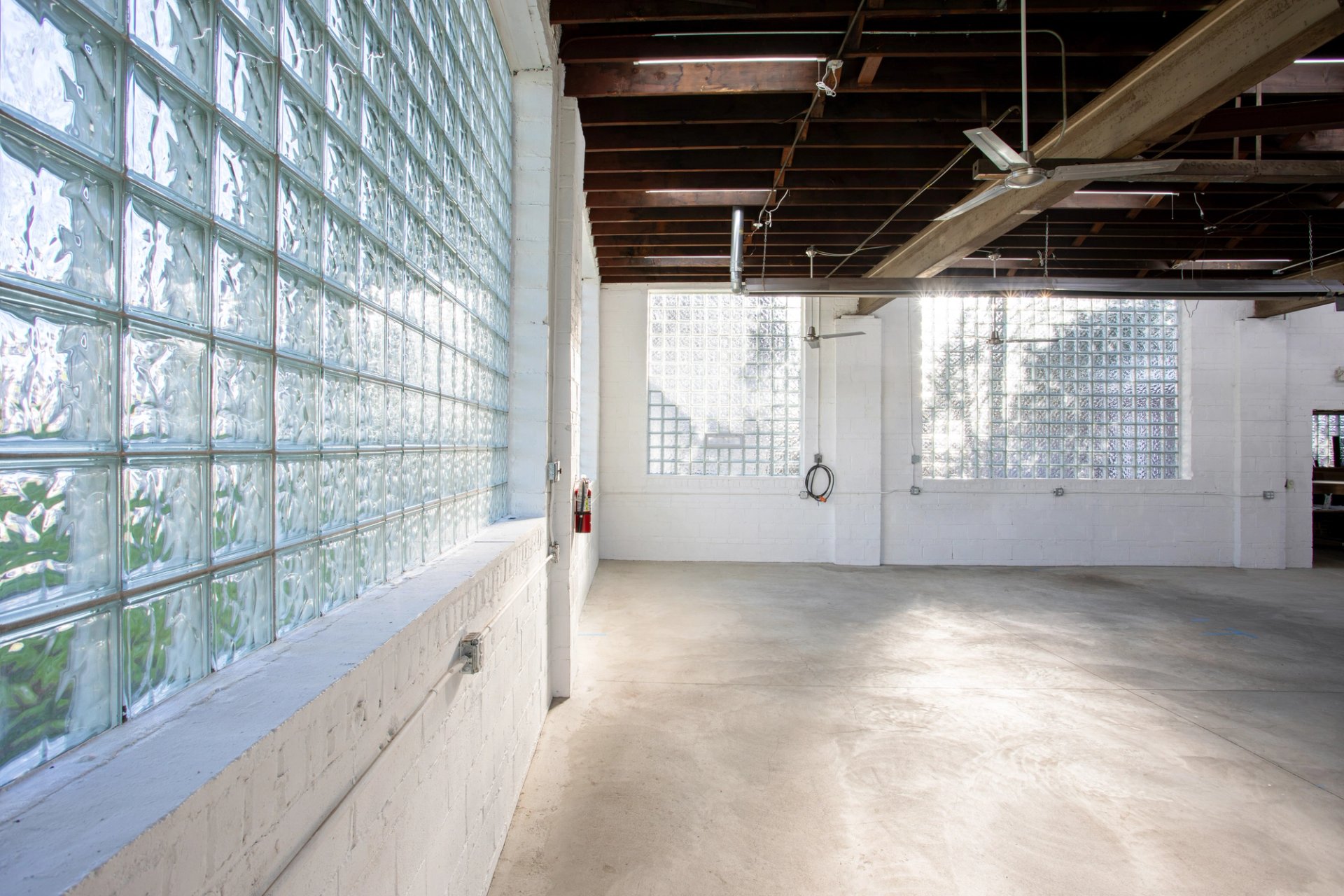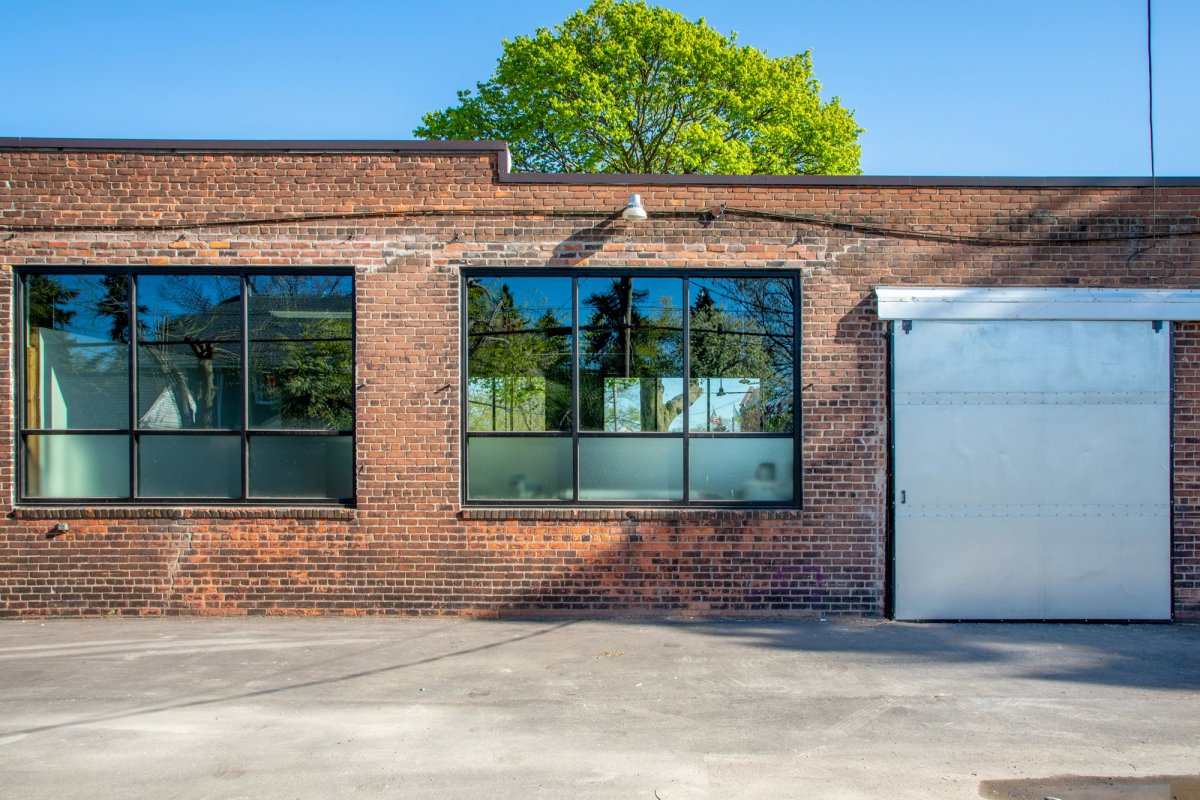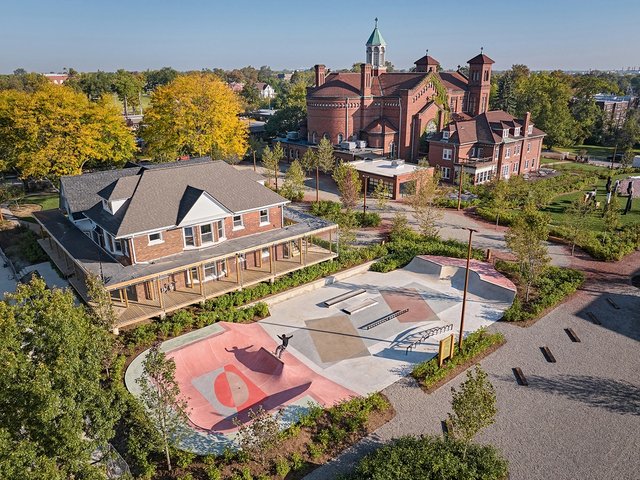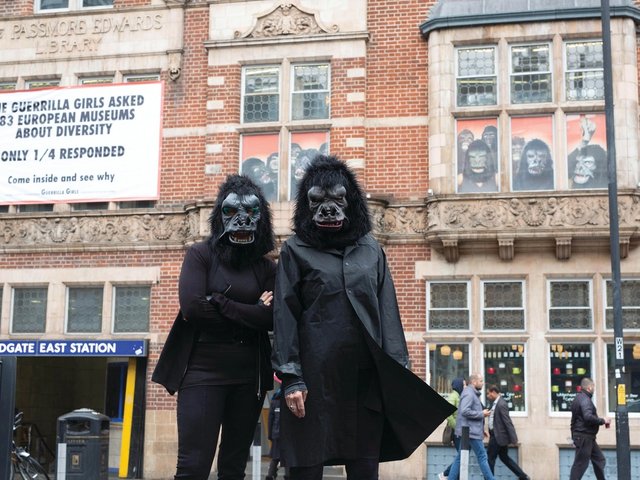In the decade since it declared bakruptcy, the city of Detroit has experienced an art renaissance, developing its scene from a scrappy network of artist-run project spaces into a sleek, institutionally backed ecosystem. As the city is increasingly reshaped by local and far-reaching forces, retaining an artist-first emphasis remains forefront in the minds of art professionals across Detroit.
Enter Samara Furlong, a Detroit native with tenures at New York's Dia Art Foundation and the mega-gallery David Zwirner under her belt, and her new non-profit, Buffalo Prescott, an artist collective and incubator in East Detroit. Named for the intersection where it is located, the former Swedish machinist shop and design studio re-launched this month, welcoming four artists-in-residence—all recent graduates of the nearby Cranbrook Academy of Art’s MFA programme—to its inaugural cohort.
“To be able to experiment and dream in real time is so exciting because we can actively respond to the needs of the residents and the community”, Furlong tells The Art Newspaper. “We don’t have to wait around—we can create something that involves everybody and is a collective experience”.
Furlong says she came up with the idea for the new space around the opening of her most recent curatorial undertaking in February, Divine Wisdom: Femme Alchemy Through Contemporary Art and Performance, a group exhibition sponsored by Voyeur Ventures, Furlong’s art advisory (three members of Buffalo Prescott’s incoming cohort were featured in the show).
“There was an artist talk the day after the event," she says, "and I spoke with some of the artists and asked, 'what does success look like to you?' They were saying that they're graduating and they were really worried about space. And so I thought—if there's a need, what can I do?”

Samara Furlong Courtesy Buffalo Prescott
After learning that her friend, furniture designer Chris Schanck, was vacating his former studio space, she saw an opportunity and jumped at the chance.
Sustaining a creative community
”I decided to do five studios instead of ten to really maximise the community element inside the space” Furlong says. “They’re each about 200 sq. ft, with museum quality drywall. We designed these really cool corrugated acid wash metal doors that have locks on them so the artists can be there 24-7. All the equipment in the building is communal—we tried to create something that has elements of a gallery experience. I'll also help place the residents in shows or sell their work for a very small percentage.”
For Furlong, helping artists grow roots within and beyond the Buffalo Prescott residency is central to its ethos. “It’s creating an alumni situation, like a gallery would list their roster or stable of artists on its site," she says. "When the artists matriculate from their time here, they’ll still be on our list, and we’ll all be in community.” That notion of community extends to programming both for the artists and locals in the space's East Detroit neighbourhood.
“This element of giving the artists professional access and using the people I know and the experiences I've had in my network to bring people to Buffalo Prescott" is key to the space's success, Furlong says. "I partnered with [Independent Curators International] and will have guest critiques in the studios. Curators from DIA [the Detroit Institute of Arts] have already been through and done studio visits with the three artists that moved in.”
Furlong is also invested in bringing an element of critique to the Buffalo Prescott experience, filling another practical gap for the resident artists—the lack of lateral networking and regular feedback for those who are no longer in a school environment.
“The emphasis on critiques really comes from trying to elevate the studio concept and make it different,” Furlong says. The artists "had this sense of loss over school because they missed the critiques. So if we form this collective and this community, then the critique fits into that naturally”
Kidding around
Buffalo Prescott also distinguishes itself by being kid-friendly, a relative rarity in the world of artist residencies. While there are a few outliers, like the week-long fully-funded Art Mamas Residency at Stoneleaf Retreat in New York's Catskill mountains and the Wassaic Family Residency, a year-long live-in retreat in upstate New York, the organic, communal aspect of Buffalo Prescott sets it apart from the more hermetic environments typical of artistic exploration. Furlong, who is a mother herself, underlines the familial aspect of the Buffalo Prescott incubator system, providing parent artists the space and flexibility to expand their practices.

Buffalo Prescott studio interior Courtesy Buffalo Prescott
“Artists should be able to bring their children, not like a lot of residencies that exclude families," she says. "We’ll have this setup where they're not only welcome, but they're encouraged. This is an incubator not just for artists, but for the rest of us. If there’s something an artist’s spouse does that could contribute, they should come along! I’m trying to create these reciprocal relationships with community members.”
The first four Buffalo Prescott residency artists were selected by invitation. Olivia Guterson, a Detroit-based multidisciplinary artist and mother whose practice honours her Black and Jewish identities, has had her work featured at the Cranbrook Art Museum, Arab American National Museum, the Museum of Contemporary Art Detroit (Mocad), Janice Charach Gallery and more. Shaina Kasztelan, a Detroit native and former prop artist, painter and Thanksgiving Day Parade float builder, has painted murals for the NXNE Music Festival in Toronto, at the Facultad de Artes y Diseño at National Autonomous University of Mexico in Mexico City, the Glass City River Wall in Toledo, Ohio—currently the largest mural in the United States—and elsewhere. Evan Mazellan is a painter who has had solo shows at Massey Klein Gallery and Bunker East in New York and Bunker West Malibu. Sara Nickelson graduated from Cranbrook’s MFA programme in painting this year after a decade working as a museum curator and gallery director, and is currently represented by Detroit's Louis Buhl & Co. An open call for the next cohort of residents will be launched in 2025.
Rising tide
Buffalo Prescott is just one of a number of recent additions to the Detroit's vast and historic art landscape. Little Village, a new artist quarter sporting new cultural spaces, affordable housing, studios and parks anchored around a repurposed hundred-year-old church was unveiled in the East Village neighbourhood this spring by the co-founders of downtown Detroit gallery Library Street Collective.
In Milwaukee Junction, Bulk Space, a collective and residency programme aimed at showcasing the work of marginalised artists, debuted its new Media Lab on 1 June, inviting “folks of all ages” to learn about and use a wide variety of different media, including cameras, audio equipment, and risographs. Detroit is also hosting its first ever, 11-venue queer art biennial, sponsored by Might Real/Queer Detroit, a local non-profit. And, in the city's East Canfield neighbourhood, the artist Jordan Weber recently debuted a large public art project that not only alerts local residents to air quality risks, but functions as a natural air filter.
For Furlong, her dreams for the future of Buffalo Prescott underscore the interpersonal aspects of community-building. The residency’s inaugural public program, Casual Safe, helmed by Kasztelan, has proven an unequivocal success.
“I actually worked with her at Mocad in 2013 and she's just great. She created the packaging for a safe sex and Narcan kit”, says Furlong, referring to the emergency treatment for an opioid overdose. “We spent a few days at the recovery project in Detroit and partnered with them and sat in there and spent days filling bags with Narcan and fentanyl test strips. The response has been incredible."
The project has had such an impact that it is moving into permanent territory. “We finally confirmed two partners for vending machines," Furlong says, "so we'll have artists create wraps for them in vinyl and we'll rotate artists and sell inexpensive prints inside, which will help us support the project online.”





